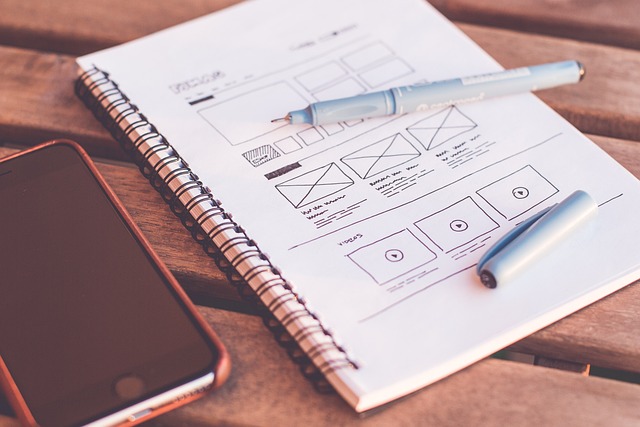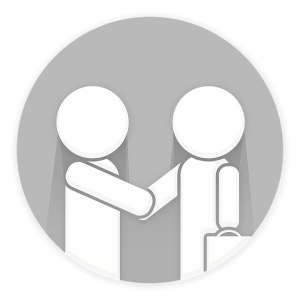Full-service web design offers a holistic solution for creating and managing successful online platforms, integrating disciplines from concept creation to ongoing support. This approach ensures a seamless user experience throughout the lifecycle of a website, aligning with brand identity, business goals, and target audience needs. Key advantages include streamlined development, effective communication, and strategic digital presence. Choosing the right agency involves evaluating past projects, technical expertise, project management methods, and client referrals. The process begins with understanding client goals, followed by market research, custom website development, design, content creation, and SEO optimization. Case studies demonstrate the impact of comprehensive strategies on sales, operations, and brand visibility. Future trends focus on enhancing UX, integrating AI/ML, and semantic design for voice search.
“Unleash your brand’s potential with the transformative power of full-service web design. This comprehensive guide explores the intricate world of creating seamless digital experiences, from concept to launch. We delve into the benefits of one-stop website solutions, uncovering the key components that define exceptional packages.
Learn how to navigate the selection process, choosing the perfect agency for your needs. Get ready to be inspired by real-world case studies and stay ahead with insights on emerging trends shaping the future of full-service web design.”
Understanding Full-Service Web Design: A Comprehensive Approach

Full-service web design encompasses a comprehensive range of services that are vital for building and maintaining successful online platforms. This approach integrates various disciplines, from initial concept creation to ongoing support, under one roof. It means a single provider or agency can handle every aspect of your website’s development and evolution, offering a seamless experience throughout the entire lifecycle.
This holistic strategy ensures that every element of your web presence is designed and optimized with a unified vision. From user interface/user experience (UI/UX) design that captivates users to backend development that powers your site’s functionality—a full-service approach guarantees all components are meticulously aligned with your brand identity, business goals, and target audience needs.
The Benefits of a One-Stop Solution for Your Website Development

Opting for a full-service web design approach offers numerous advantages, making it an attractive choice for businesses and individuals alike. By enlisting one team to handle all aspects of your website development, you gain a streamlined process that saves time and resources. This comprehensive solution encompasses everything from initial concept creation and design, to coding, testing, and even ongoing maintenance – all under one roof.
The benefits extend beyond efficiency; it also ensures consistency throughout the entire project lifecycle. With dedicated professionals collaborating closely, your website is crafted with a unified vision, resulting in an engaging user experience. Moreover, this integrated approach fosters effective communication, enabling quick decision-making and easy adjustments as needed, ultimately leading to a successful online presence that meets – and exceeds – your expectations.
Key Components of a Successful Full-Service Web Design Package

A comprehensive full-service web design package goes beyond creating a visually appealing website; it involves a strategic and holistic approach to digital presence. The key components include a detailed understanding of the client’s business goals, coupled with user experience (UX) design that ensures the site is intuitive and engaging for visitors. A successful full-service web design integrates responsive design, making websites adaptable across various devices and screen sizes, enhancing accessibility and user satisfaction.
Furthermore, search engine optimization (SEO) plays a pivotal role in driving organic traffic and visibility. The package should encompass keyword research, on-page optimization, content strategy, and technical SEO implementations to ensure the website ranks well in search engine results. Effective web design also incorporates analytics tools for tracking performance, providing insights into user behavior, and guiding data-driven decisions for continuous improvement.
Choosing the Right Agency: Criteria for Evaluating Full-Service Providers

When selecting a full-service web design agency, it’s crucial to evaluate their capabilities and align with your project needs. Here are key criteria for assessment: first, review their portfolio to gauge the quality and diversity of their past projects, ensuring they match your desired aesthetic and functionality. Second, consider their technical expertise; a robust full-service provider should possess proficiency in various programming languages, content management systems (CMS), and e-commerce platforms.
Additionally, assess their project management methodology, communication channels, and responsiveness to queries. A transparent and collaborative approach ensures a smoother development process. Referrals from past clients can also offer valuable insights into the agency’s reliability, customer service, and delivery against promises.
The Process: From Concept to Launch with a Full-Service Team

In a full-service web design setup, the journey from concept to launch is a seamless and integrated process, facilitated by a dedicated team of experts. It all begins with an in-depth understanding of the client’s vision and goals, where designers, developers, and project managers collaborate to translate ideas into a comprehensive strategy. This initial phase involves market research, competitive analysis, and defining key performance indicators (KPIs) to lay a solid foundation for the upcoming development.
Once the plan is set, the team springs into action. Developers craft a custom website using cutting-edge technologies, ensuring responsiveness across all devices. Designers work on the visual elements, creating an aesthetically pleasing interface that aligns with the brand identity. Meanwhile, content writers create engaging copy, and SEO specialists optimize the site for search engines to drive organic traffic. Regular progress updates and client feedback loops ensure the project stays on track, resulting in a high-quality, fully functional website ready for its grand debut.
Case Studies: Real-World Success Stories in Full-Service Web Development

In the dynamic landscape of digital solutions, case studies offer tangible proof of the transformative power of full-service web development. These real-world success stories showcase how comprehensive web design strategies can propel businesses forward in an increasingly competitive market. By integrating user-centric design, robust functionality, and cutting-edge technology, top-tier development teams craft not just websites, but seamless digital experiences that resonate with audiences.
From e-commerce platforms that boost sales through intuitive navigation and secure transactions to custom enterprise solutions streamlining operations, each case study reveals the versatility of full-service web development. By leveraging these success stories, businesses can gain valuable insights into how tailored strategies, coupled with data-driven decisions, can drive growth, enhance brand visibility, and create lasting connections with customers in today’s digital age.
Future Trends and Innovations in the Field of Full-Service Web Design

The future of full-service web design is brimming with exciting trends and innovations that are reshaping the digital landscape. One prominent trend is the increasing emphasis on user experience (UX) and accessibility, with designs becoming more intuitive and tailored to individual needs. This involves creating responsive websites that seamlessly adapt to various devices and screen sizes, ensuring a consistent and engaging experience for all users.
Additionally, advancements in technology are driving the integration of artificial intelligence (AI) and machine learning into web design processes. AI-powered tools can automate tasks such as content creation, layout optimization, and personalized user interactions, allowing designers to focus more on creativity and strategic planning. Voice search optimization is another key area of focus, as more users turn to voice assistants for information and online navigation, demanding a new level of semantic and conversational web design.
